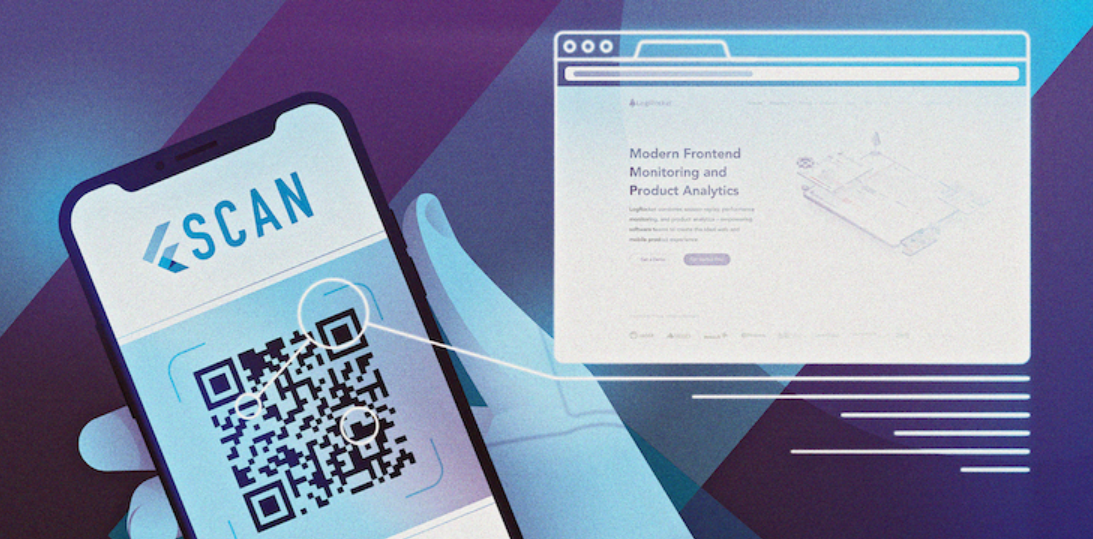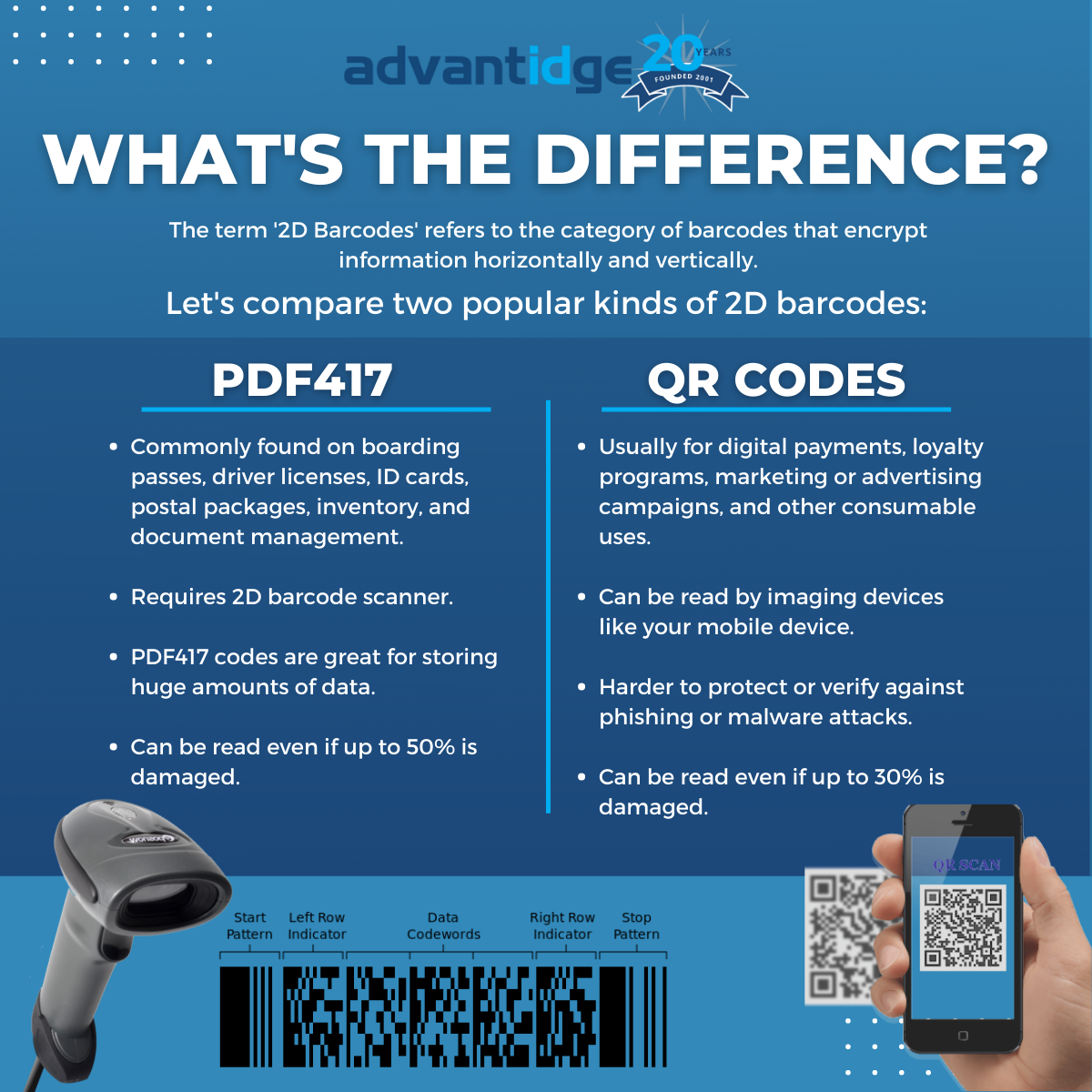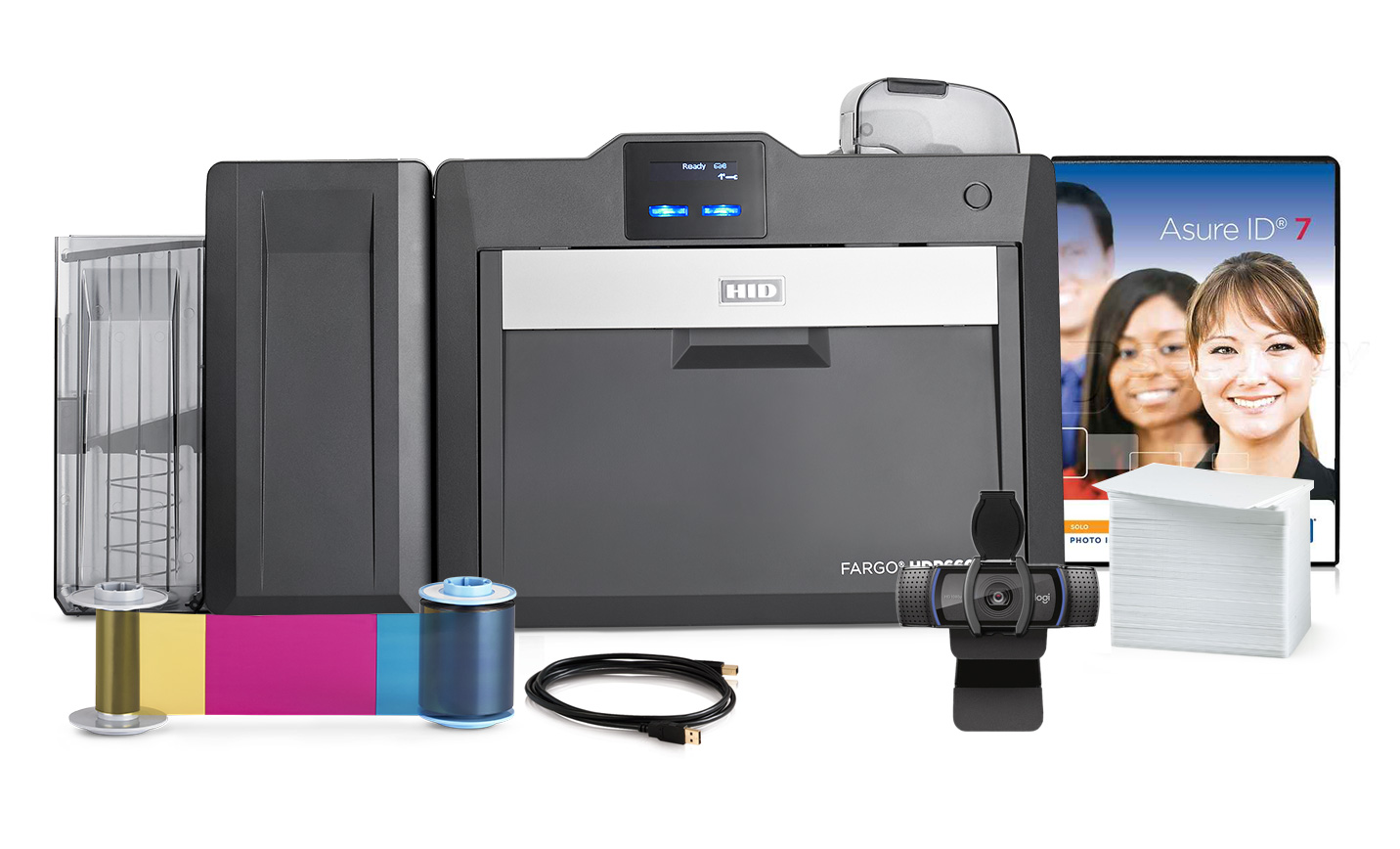
Let’s Talk about the 2D Barcode
A 2D barcode is a graphical image, and matrix data, that stores information horizontally like 1D barcodes, as well as vertically, increasing their storage capacity. Quick response (QR) codes enable fast data access and are a type of 2D barcode. There are multiple different types of 2D barcodes and barcode systems. Barcodes are one of the most popular methods of incorporating computer automation into ID badges for organizations focused on value. This is because they’re easy to create at a high volume, and the information can be personalized during the normal ID card printing process; making it manageable and easily distributed through large workforces.
2D barcodes are used in a variety of industries and applications, such as allowing access to detailed information between employees, as well as keeping track of identification markers, product categories, dates, times, and more. You can also utilize 2D barcodes in membership ID badges as part of marketing strategies to track usage by members and issue rewards offline.
Types of 2D Barcodes:
- Data matrix: This barcode type can store about 2,000 characters, including alphanumeric characters, GS1 data, and even binary data. Data matrix codes are still readable even if they are 60% damaged, which is why the electronic, automotive, health, and even document storage industries use them.
- PDF417: This 2D barcode can store various binary data, including alphanumeric and special characters. It can also store images, signatures, and fingerprints. As a result, this is one of the most popular 2D barcodes used in the ID industry such as on an employee ID badge, as well as inventory management and transportation.
- MaxiCode: This is the unique barcode that United Parcel Service (UPS) developed and uses and its sole purpose is to help couriers track packages and manage shipments. It can contain invoice numbers, customer references, tracking numbers, purchase order numbers, and carrier identification.
- GS1 Composite code: A GS1 Composite code consists of two components. The bottom component contains the primary data, such as the item identification number, while the top contains secondary data, such as batch codes or expiration dates. Grocery stores use GS1 Composite codes on fresh produce, for example.
- QR code: QR codes are matrix barcodes that can contain various data types, such as alphanumeric and binary data. This type of barcode technology is one of the most widely used today, especially by mobile devices.
QR codes are the most recognizable type of 2D barcode since they’ve seen a rise in use due to the pandemic’s contactless requirements and thanks to the QR code scanning functionality no longer being limited to third-party applications. Using your phone as a reader is one of the biggest differences between QR codes and other types of 2D barcodes, which require a specialized 2D barcode reader. This means that QR codes cannot achieve the same levels of security measures as other barcodes, like PDF417 codes.

The difference between the 2D barcode used for employee ID badges is the PDF417 and QR codes.
QR codes function essentially as a physical touchpoint to a digital destination in the form of a website URL, PDF file, landing page, questionnaire, video, audio, etc. In most cases, a QR code is simply an URL that takes you to a webpage or triggers an action to happen, even if the user is unaware it is simply a URL when scanned. There is no management of access or ability to see who is accessing your QR code, however, once you reach the intended URL there can be secondary actions for secure login or another form of authentication.
QR codes can serve a wide range of temporary ID card applications, including marketing campaigns, check-in/out applications like the Lobby Track software, event or festival physical access control systems, entertainment or educational purposes like art displays, or other forms of consumable usage. Even then, it is recommended to add levels of multi-factor authentication to allow multiple tiers of access like a VIP ID card vs. general admission for events like those listed above.
QR codes can be used to support automation in the secure login setup process when coupled with multi-factor authentication; Also known as two-factor authentication (2FA) as used by Microsoft Office 365 and Google on multiple platforms. Multi-factor authentication ensures that a user verifies their identity with more than just a username and password. QR codes are not usually used as the alternate form of identity authentication in a secure environment, when configuring complex security systems it is common to use a QR code on screen or with email instructions to start the process by taking the user to the correct URL. This allows IT to connect their users to the right starting place and reduce help desk requests from their workforce which saves time and money for their organization.
For those organizations looking for security applications, RFID credentials such as HID prox, HID iclass, or Seos are the industry standard for physical access control systems. Customized visitor management solutions allow for the inclusion of QR codes with contactless automation for guests; while adding preventative measures using customized security badges printed with PDF417 codes for staff. The majority of our ID card systems can print 2D barcodes directly onto employee ID badges or membership cards for a more comprehensive and streamlined access control system.
Contact us today for a brief consultation to discover how barcodes can bring innovation to your organization to increase efficiency, maintain security, and still access sensitive data. To find out more about how ADVANTIDGE can provide identity management solutions, contact us here.


